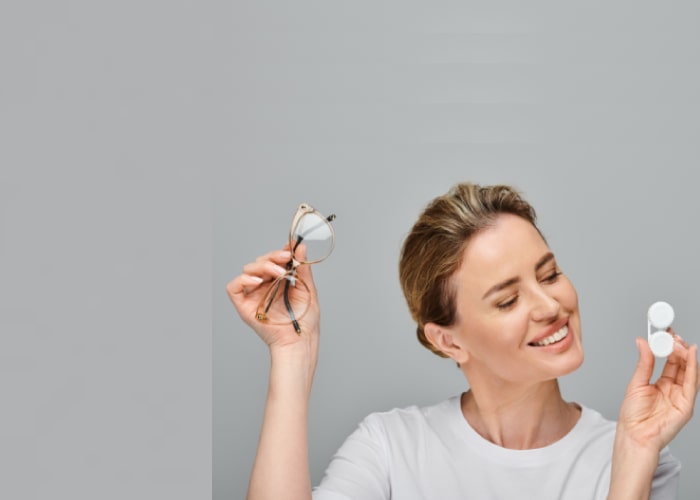
Contact lens fitting
Our comprehensive contact lens fitting service has one goal in mind: finding you the perfect lenses.
What Happens During a Contact Lens Fitting?
We begin with a thorough eye examination and a fitting consultation where we discuss your lifestyle and vision needs, as well as your preferences. We will use advanced imaging technology to take precise measurements of your eyes so we can get the fit spot on.
There is no rushing and no compromises – just meticulous attention to every detail of your eye health and comfort. This means we will gladly offer you several appointments to make completely sure that your contact lenses fit comfortably and deliver clearer vision as intended.


Why contact lenses?
If you’re undecided between contact lenses and glasses, imagine:
- Diving into a pool without worrying about your glasses
- Taking in a seaside vista with crystal-clear peripheral vision
- Getting dressed up to the nines without stressing about how your glasses look
- Walking in the rain without needing to constantly wipe your glasses just to see clearly
- Taking selfies without glare from your glasses
- Working out without your frames sliding down your nose.
Glasses do a great job, but contact lenses do it while giving you more freedom to do exactly what you want.
Who are contact lenses suitable for?
Contact lenses can help with a variety of eye conditions, including:
- Short-sightedness (myopia)
- Long-sightedness (hyperopia)
- Astigmatism
- Age-related reading difficulties (presbyopia)
Most people can wear contact lenses comfortably, including children from the age of 10 (sometimes even younger). They’re a great choice if you’ve got an active lifestyle or you just don’t want the hassle of wearing glasses.


Wide Range of Contact Lens Options for Every Vision Need
We offer a variety of lenses, including:
- Soft lenses (daily, weekly and monthly disposables)
- Hard (RGP) lenses
- Multifocal lenses for both distant and close-up vision
- Toric lenses for astigmatism
- Orthokeratology lenses that are worn overnight to gently reshape your cornea for clearer vision the next day.
We also offer selected bandage contact lenses to cover the front surface (cornea) of your eye if it is healing from an injury or disease, and certain prosthetic contact lenses to cover your cornea if it has become cloudy.
Are you ready to embrace contact lenses?
Book Your Contact Lens Consultation Today
Your journey to hassle-free, frame-free vision begins here.


